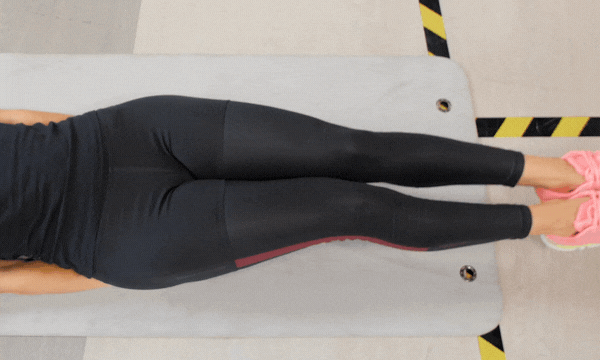Hysterectomy is a procedure that leaves behind swelling and underused muscles that may start bothering you after a couple of weeks of recovery. In case you are wondering, “ can I get a flat stomach after a hysterectomy,” you will be pleased to hear that this is something that can be achieved.
However, before we start explaining the methods that can help you get a flat stomach after this procedure, it is important to mention that you need to wait and rest to recover your strength as the doctor prescribed since a hysterectomy is a very invasive operation. The exercises for flattening your stomach require straining your muscles which is why you need confirmation to proceed from your healthcare provider. With that out of the way, there are a lot of topics to cover, so without further redo, let us get started.
Contents
1. Hydration
We are going to start with the simpler staff, and one of the first things you should start doing is drinking plenty of water. This bears huge importance since staying hydrated at all times will keep you from being bloated.
Women often have water retention after the hysterectomy procedure, and this is mainly because of poor hydration. It is recommended to intake at least two quarts of water daily, but this is something that depends on your body weight – the higher it is, the more water you should consume daily.
Over time, you will notice that the extra water intake will help you get rid of excess water in your system, which is a great starting point in the process of flattening your stomach again.
In addition to maintaining proper hydration, consider exploring complementary approaches to support your post-hysterectomy recovery. Some individuals find that incorporating IV therapy, a popular wellness treatment can provide essential nutrients and hydration directly to your system, potentially aiding in your overall well-being during this crucial healing period. You may click here to discover comprehensive information on IV therapy services in Miami Beach.
2. Nutrition
Regardless of the surgical procedure, you go through; a steady and balanced diet is one of the key factors in the recovery process. Some foods such as beans, broccoli, onions, and cabbage are known to induce general swelling of the belly in many people, which is why it is highly important to avoid them.
Removing milk and dairy products is also a wise move, as many people also have issues with lactose intolerance that can cause gas and bloat, which is something you definitely should avoid. The best course of action would be to consult with your doctor and nutritionist, as they can provide you with accurate advice about nutrition and assist you in getting rid of your swollen belly.
3. Daily Walks
Scheduling daily walks is an important step in getting your body back in shape after a hysterectomy. It is recommended to take a walk for at least 30 minutes daily to start off, and it is best to do so on a dry, flat surface, as it will help you tone all your muscles and get in shape over time.
It is also important to remember to tuck your tummy when walking to get a better effect. It is perfectly fine to relax your abdominal muscles when you are lying down and resting, but when you are walking, it is best to keep them flexed and tight.
4. Modified Sit Up
Once your doctor gives you the green light to start exercising, it is wise to start slowly and go with a tweaked sit-up exercise. Start by putting your hands behind your head in a horizontal position and lift your shoulders and head by using your core muscles, not your arms. Make sure to hold for a few seconds, and gently bring your head down to the starting position.
Make sure to breathe properly and slowly exhale with each repetition and relax every time as you lower your head. Repeat this exercise about ten times per round, and your abdominal muscles will slowly but surely start recovering over time.
5. Stomach Tightening
Another effective exercise for working on your stomach pouch is stomach tightening on your hands and knees. If this exercise is too difficult for you, kneel in front of the chair with pillows under your feet and hold your elbow seat on the chair.
To get the best effect, make sure to move only your stomach muscles. Exhale and hold your abs in for a couple of seconds and then release while breathing in, and repeat.
6. Modified Pelvic Tilt
The pelvic tilt is an exercise that starts by lying horizontally with your knees facing the ceiling. Place one hand under your lower back and the other on your belly. When you take this position, push your back down while tightening your abdominal muscles to support the downward pressure. Keep this position for five seconds, release and repeat.
7. Wear a Girdle or Abdominal Binder
Girdles and abdominal binders are very helpful when stomach muscles are too weak or fail to respond fast to exercise. Girdles are actually pieces of underwear that come with extra lycra in them to provide extra support for your belly. They help hold stomach muscles in and assist you in flattening them.
Abdominal binders are elastic wraps that are placed around the abdominal area, and they are fastened with velcro. You can use these binders right after the hysterectomy procedure. Both girdles and abdominal finders are typically inexpensive, and you can find them easily.
8. Leg Lifts
Leg lifts are effective exercises for working your abdominal area. You do this exercise by lying on your back on the floor or bench, and with your knees straight, lift your legs by flexing your hips until they are extended in the direction of the ceiling.
Afterward, lower your legs until your hips and knees hover just above the ground and hold for a few seconds, then repeat. You must bend your hips to engage the front abdominal muscles, and this is a highly effective exercise.
9. Gentle Yoga
If your doctor approves, you can start doing isometric exercises right after you leave the hospital. In case the doctor agrees, you can try a yoga plank pose. You do this by lying on the floor in a prone position and then lifting your body off the floor with your arms and toes.
Stretch from your heels to your shoulders, and keep your body in a straight line with your stomach contracted. Hold this position for 30 seconds.
Final Words
One of the most important things in the process of flattening your stomach after a hysterectomy procedure is to stay consistent and disciplined in your efforts. Losing body fat and reducing bloatedness takes time, so you will have to maintain a calorie deficit for a longer period.
Hysterectomy recovery is long and difficult, but it is something that can be achieved through willpower, discipline, and hard work. However, if you incorporate quality strategies and stick to them, you will notice positive changes in time and use that as a motivation to keep going.

Steve is a certified trainer with more than 10 years of training experience and he holds a Master’s in Sports Science. Prior to Boston Rock Gym, Steve worked for two years as a personal trainer.








